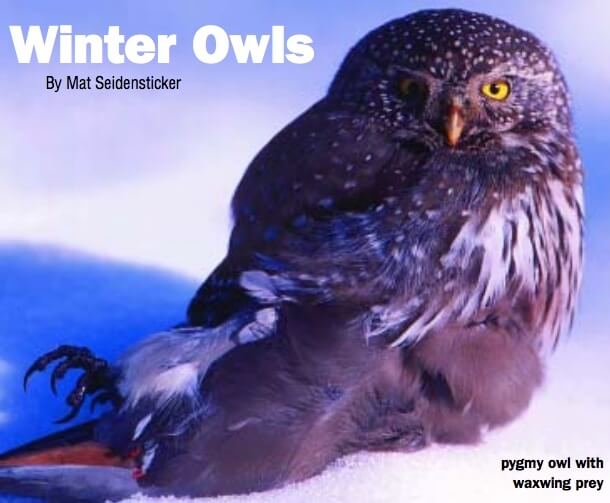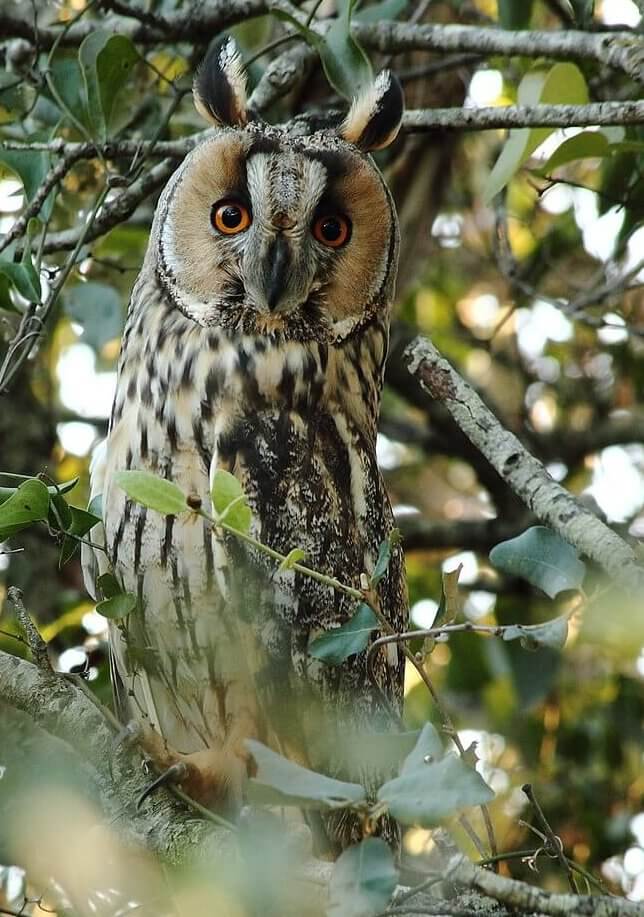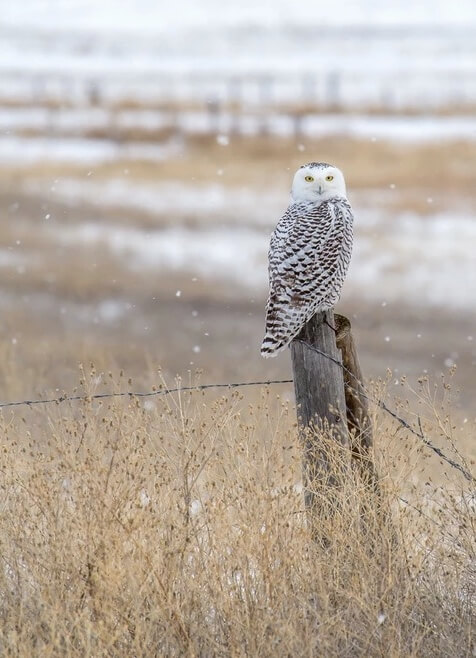
photo by Steven Gnam
Owls belong to a group of birds known as raptors or “birds of prey.” Raptors are deft predators that possess sharp talons and down-curved bills – adaptations of their carnivorous diets. Hawks, eagles, and falcons are active during the day (diurnal), while owls are primarily active at night (nocturnal).
Owls have developed several adaptations to help them cope with a nocturnal lifestyle, including large forward-facing eyes, a keen sense of hearing, feather modifications for silent flight, and a unique foot arrangement to grasp prey effectively. Owls also have evolved low-frequency vocalizations as a means of communication in the darkness. As a general rule, owls do not build their own nests – the larger species use old stick nests of other birds (hawks, crows, magpies) and the smaller species tend to use natural cavities or woodpecker holes in trees. Most owls are sedentary or resident, staying in more or less the same place year-round. Some of the smaller species, however, do show migratory tendencies.

Long-eared Owl. Photo by Luis Nunes Alberto, CC 3.0.
What about Montana’s owls?
From grasslands and prairies to the high mountains, Montana’s owls occupy varied habitats. Most species are associated with trees but Short-eared, Burrowing, and Snowy Owls are equally at home amid the openness of our prairies and plains. In winter, most owls are solitary, often found roosting by themselves. Long-eared Owls are an exception, though. This species often roosts in communal, non-breeding groups during winter. Most owl species in Montana are year-round residents. However, the peculiar Burrowing Owl and predominantly insect-eating Flammulated Owl tend to leave Montana after the breeding season.
Where do I find those that stay?
A good first step to finding owls is to learn about which habitats each species occupies. To find Boreal Owls, for example, it would be better to search high-altitude spruce-fir forests rather than cottonwood river bottoms. Owls will often roost at a familiar or “favorite” site during the day. Searching suitable habitat for owl pellets (regurgitated fur and bones) and/or whitewash (owl poop) at the base of trees or in dense thickets will help to locate a favorite roost site. Be sure to investigate large openings or cavities in trees; you just might find a Western Screech or Saw-whet Owl roosting inside. Owls are frequently “mobbed” by small birds – and no wonder! Northern Pygmy Owls, for instance, often visit bird feeders in winter to pick up a quick meal. Take time to look and listen to your surroundings. Sounds from an anxious group of chickadees just might mean an owl is nearby!
Perhaps the best way to locate owls is to go out at night and listen for them. Montana owls start hooting and tooting in February, and continue through April each year – a sure sign of changing seasons and the onset of breeding time. Each owl species has a unique voice or song that can be used for identification. Learning the voices of each owl species and then going out after sunset to listen is an effective way of locating owls. So get out there and keep your ears open!

Snowy Owl. Photo by Rob Gappert.
Some resources about owls:
Owls, Whoo Are They? by Kila Jarvis and Denver Holt, Mountain Press Publishing Co., 1996.
Owl Research Institute, owlresearchinstitute.org.
The Owl Pages, owlpages.com.
Did you know?
Fifteen owl species have been documented in Montana: Barn Owl, Flammulated Owl, Western Screech Owl, Eastern Screech Owl, Great Horned Owl, Snowy Owl, Northern Hawk Owl, Northern Pygmy Owl, Burrowing Owl, Barred Owl, Great Gray Owl, Long-eared Owl, Short-eared Owl, Boreal Owl and Northern Saw-whet Owl. Only one of these species, the Snowy Owl, does not breed in the state.
This article was originally published in the Winter 2005-2006 issue of Montana Naturalist magazine, and may not be reproduced in part or in whole without the written consent of the Montana Natural History Center. ©2005 The Montana Natural History Center.
Click here to read more articles from Montana Naturalist magazine.
Want to learn more about our programs? Sign up for our e-newsletter! You can also become a member and get discounts on our programs as well as free reciprocal admission to 300+ science centers in North America!












